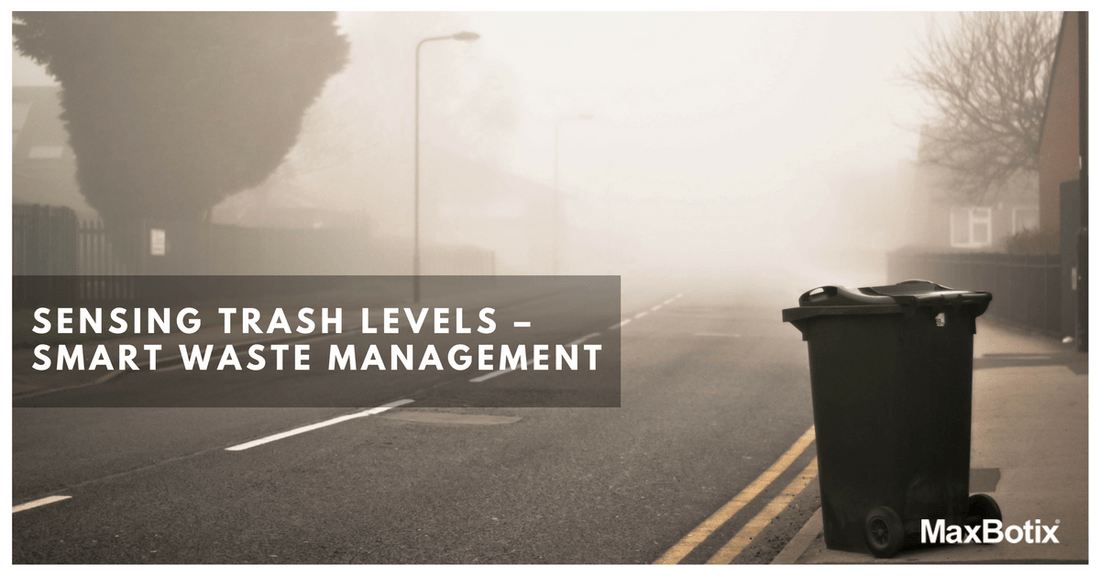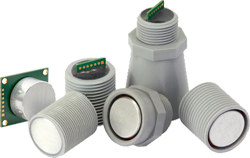Using IoT for Smarter Waste Management and Better Business
According to Wikipedia, "Waste management or waste disposal is all the activities and actions required to manage waste from its inception to its final disposal. This includes amongst other things, collection, transport, treatment, and disposal of waste together with monitoring and regulation. It also encompasses the legal and regulatory framework that relates to waste management encompassing guidance on recycling." Technology is expanding reach across all industries to simplify and optimize performance. A very important face to the development of smart cities is smart waste management. The crossing of waste management and smart city development births smart waste management. Smart cities are leveraging the Internet of Things (IoT) to create an efficient system to save cities money and save the environment. A major way smart waste management has been impacted by technology is route optimization.What makes Smart Waste Management so Smart?
Waste management companies rely on technology to reduce their time and resources allocated to managing waste. Sensor-based technologies are key to developing smart solutions for solid waste management. According to the Annenberg Learner Foundation, "Every year, the United States generates approximately 230 million tons of "trash"--about 4.6 pounds per person per day."With such an increase of waste, problems with waste collection, transport, processing, and disposal have grown. Smart waste management is a necessary solution. Fill-level sensors designed specifically for sensing waste levels, like our TrashSonar line, are being used to sense the level of trash bins in order to determine if a can needs to be emptied or not. That means there could be less time on the road for trucks, less need for human resources as well as fuel emissions.How Does Smart Waste Management Work?
- Smart sensors measure the level of waste
- Containers send the info to a data management system of the level of waste or last collection.
- Only certain bins are marked for collection.
- Vehicles only collect full or overdue containers.
Benefits of Using Route Optimization and the Connection to Waste Management Services:
Whether you're using city-provided solutions or a contracted company, waste management services provide the opportunity to keep your environment cleaner. One of the greatest problems solved by smart waste management solutions is route optimization. Waste management is not the only industry affected by route optimization, also, trucking (logistics) is a major adopter of optimizing routes. The main reasons to adopt route optimization are to:- Reduce mileage on fleet vehicles.
- Cut costs (on labor/maintenance/fuel, etc.)
- Save Time - Increase efficiency.
- Identify the most cost-effective routes.
- Give a better response to customers
- Less time is spent planning routes, or picking up at sites that don't need service.
- Review driver performance.
- Avoid transportation delays, while tracking fleet in real-time.

Waste Management Collection Using IoT (Engineer Project)
In a project developed by an engineer, an ultrasonic fill level sensor is used exactly this way to optimize waste collection. In this particular project, our MB7139 is used in this exact application. Posted on Hackster.io, Engineer Amol Disale, detailed his development of an IoT connected, garbage container. In this tutorial, Disale details the hardware used, software, as well as the tools. Objectives:- Optimize waste collection
- Reduce fuel consumption
- Sonar waves are sent from the sensor to measure how full the waste bin is.
- Temperature is also measured.
- Data is collected and sent via a cellular network to analyze and display on a web-based platform for customers.
- The sensor measures the container filling level using ultrasonic technology.
- The device is using an ultrasonic sensor for distance measurement to communicate with the management company whether or not the waste bin is full and needs to be serviced.
- Companies will be able to forecast when bins will be full from the data collected.
Where is Smart Waste Management being used?
- Residential Buildings
- Streets
- Commercial Buildings
- College Campuses
- Homes
- Public Places
- Hospitals
- Airports
After deploying the solution, we have been able to go from collecting 840 containers 4 times a day to collecting just 80 containers a day. This has increased our operational efficiency upwards of 90% and resulted in significant cost savings. The solution has also provided us with data which has allowed us to recognize peak times in areas and from that adjust the allocation of staffing in those areas as well as increase waste container capacity where needed.Smart city initiatives and new regulations are expected to help the smart waste management segment expand at a compound annual growth rate of 16.9 percent between 2016 and 2021. - MarketsandMarkets. Companies like Envac are taking it a step further in developing an automated waste management system. The Swedish company has an underground waste collection system which collects waste via vacuum tubes, whether outside or indoors. The underground tanks have sensors that notify waste collection when the tank is full and ready to be serviced. The waste is then collected away from residential areas by a truck and then transported to a waste management facility. https://www.youtube.com/watch?v=-xtXigjJ3o0 Key Points In Summary
Why Cities Should Invest in IoT-based Waste Management Systems?
After deploying the solution, some solutions can go from 750 containers being collected four times a day to just 65 containers being collected once a day. This can improve operational efficiency upwards of ninety percent and can result in significant cost savings as well. The solution can provide data which enables teams to recognize peak times and from that adjust the allocating of staffing in those areas and increase waste container capacity where necessary.How can you implement smart waste management?
By working with us on your sensor solution you're one step closer to developing the smart waste management system you need. We have the expertise to help you develop a truly innovative product. The implementation part will depend on your resources within your company, but we'll work closely with you to ensure that your project runs smoothly.How Do Cities Currently Manage Waste?
Waste management is a complex task requiring many different departments and employees. Most municipalities use manual methods for waste management. These methods are inefficient and require large amounts of time and money to complete. Checking every bin and can in given area causes a huge amount of wasted time and money.Conclusion
The collection of waste is possibly the most important process for waste management systems. Route optimization could be the greatest point to be able to cut costs for the operation of managing solid waste. Operating costs like labor, fuel, and equipment can lower as efficiency increases. Hours of labor can be reduced along with mileage on service vehicles. Our MB7139 is an integral part, as a waste level sensor, in a smart waste management system. Managing routes of waste collection efficiently is attributed to reliable systems put in place to detect locations that need service, and the data which can help you predict how often. IoT solutions enables cities to function smarter. We want to make sure we're here to cover any part of your journey in changing the world. If you're in need of a reliable sensor for your waste level sensing, our TrashSonar line is ideal. Place your order today from our webstore or contact our sales team at sales@maxbotix.comGreat sensors for Smart Bin and IoT Fill-level Sensing:
MB7137 I2CXL-TrashSonar-WR
Features of the weather resistant MB7137, I2CXL-TrashSonar-WR, include centimeter resolution, range information from 20cm to 350cm for the nearest detectable target, up to a 40Hz read rate, and an I2C interface.
Buy NowMB7138 XL-TrashSonar-WRM
Features of the weather resistant MB7138, XL-TrashSonar-WRM, include centimeter resolution, range information from 20cm to 350cm to the target with the largest acoustic return, a 6.7Hz read rate, and various output options: pulse-width, analog voltage, and RS232 serial.
Buy NowMB7139 XL-TrashSonar-WR
Features of the weather resistant MB7139, XL-TrashSonar-WR, include centimeter resolution, range information from 20cm to 350cm for the nearest detectable target, a 10Hz read rate, and various output options: pulse-width, analog voltage, and RS232 serial.
Buy Now



